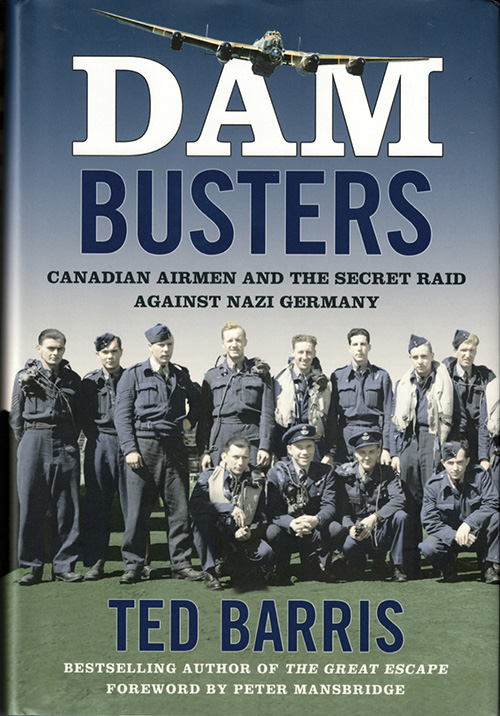Book Reviews

Dam Busters: Canadian Airmen and the Secret Raid against Nazi Germany
by Ted Barris
Toronto: Harper Collins Ltd – Patrick Crean Editions, 2018
i-xxxiii, + 562 pages, extensively illustrated including maps,
HC - $24.75
ISBN - 9781443455435
For more information on accessing this file, please visit our help page.
Reviewed by David Bashow
With Dam Busters, the distinguished Canadian Journalist and bestselling author Ted Barris has crafted an outstanding, exceptionally-comprehensive and highly-readable tribute to one of the most audacious, and perhaps until now, one of the more underappreciated combat actions of the Second World War. By way of background, the Royal Air Force Bomber Command raid by 617 Squadron on the hydroelectric dams of the Third Reich’s industrialized Ruhr Valley in May 1943 was a marvel of technological ingenuity, and a supreme test of human resolve, courage and determination. What is not widely known is that Canadian airmen factored proudly and significantly in this daring attack. Specifically, of the 133 aircrew participants, 29 were Canadians, and of that number, 14 were killed on the raid. And this book is, in particular, a celebration of the Canadian contribution.
It has many strengths, commencing with the excellent Foreword written by Canadian broadcasting luminary Peter Mansbridge, whose father was a Bomber Command veteran and Distinguished Flying Cross winner, and I found Peter’s words very moving, eloquent and highly-appropriate. Scholars will also appreciate Barris’ Preface, in which he detailed the historiography of the raid, and the manner in which he introduced the ‘cast of characters’ individually, as he does throughout the manuscript, because it really helps the readership to get to know these brave young men.
Structurally, the book follows a logical flow from comprehensive background, including the evolution of the need for the attack, the germination of the attack concept, and the subsequent development of an appropriate weapon. The narrative then progresses through the arduous and innovative training phase, the operation itself, the results obtained, and a comprehensive aftermath and epilogue. Throughout the book, the technical and human factors, the attack plans, and the operational execution of the raid are covered in meticulous detail.
However, I believe the very soul of the book rests with the marvellous first-person recollections of the participants themselves, gleaned from myriad sources, including the manner in which the extended families were brought into the narrative. The author’s sources are rich and varied, both primary and secondary, and the text is replete with little-known details, such as the rationale for the shape change of the weapon itself, the importance of providing it with backspin, the critical nature of adhering to very specific, constrained and stringent attack parameters, and so on. Particularly impressive was the cataloguing of the results obtained, and the downstream effects of the bombing upon German industry and wartime morale, especially as the latter applied to both sides. Barris also tackled the issue of both the physical and the psychological casualties very well, including the effects upon loved ones. In terms of visual support for the narrative, the maps and figures are simple, clear, and effective, and the images are all carefully chosen and highly supportive.
On a personal note, a number of years ago, I was being driven from a Kingston automobile dealership to my place of work at the Royal Military College of Canada. In the course of a discussion with the driver, who was perhaps eight years older than myself, and who hailed from Geraldton Ontario, he revealed that his uncle had flown in the dam’s raid. During the course of our conversation, he spoke fondly about his “Uncle Jimmy,” whom he remembered as a child in Geraldton. It turned out that “Uncle Jimmy” was Jimmy McDowell of Geraldton, Ontario, the rear gunner in Vernon Byer’s crew, and he and his entire crew would be among the first to die that night, shot down by devastating ground fire at low level over Holland while inbound to the target. It’s a small world…
In sum, this book is exceptionally well-researched and balanced between the technological challenges and the stellar courage and innovativeness of the participants. It is a definite must read. Highly recommended.
David L. Bashow, OMM, CD, a former fighter pilot, is the author of several books dealing with wartime Bomber Command, including the highly-acclaimed No Prouder Place – Canadians and the Bomber Command Experience, 1939-1945. He is currently an Associate Professor at the Royal Military College of Canada, and the Editor-in-Chief of the Canadian Military Journal.







